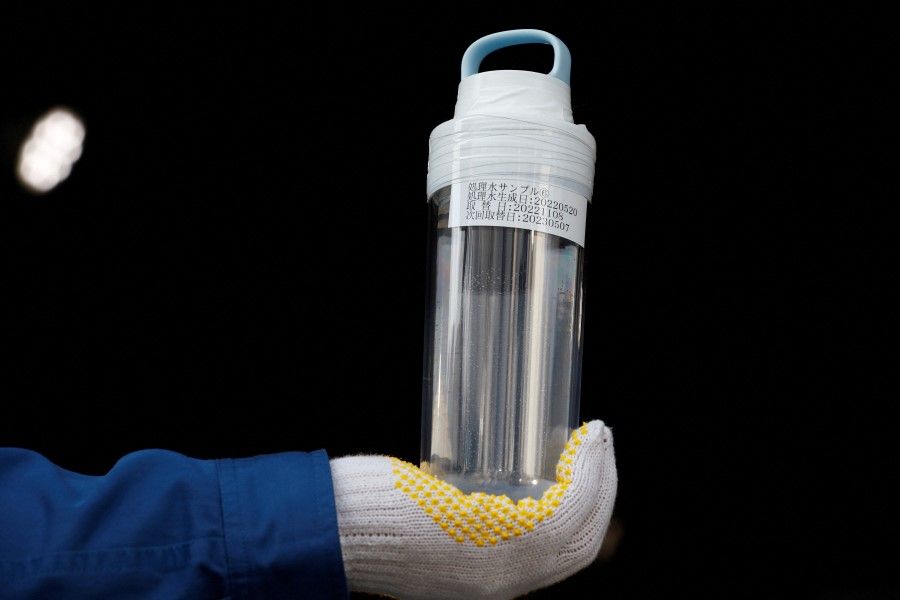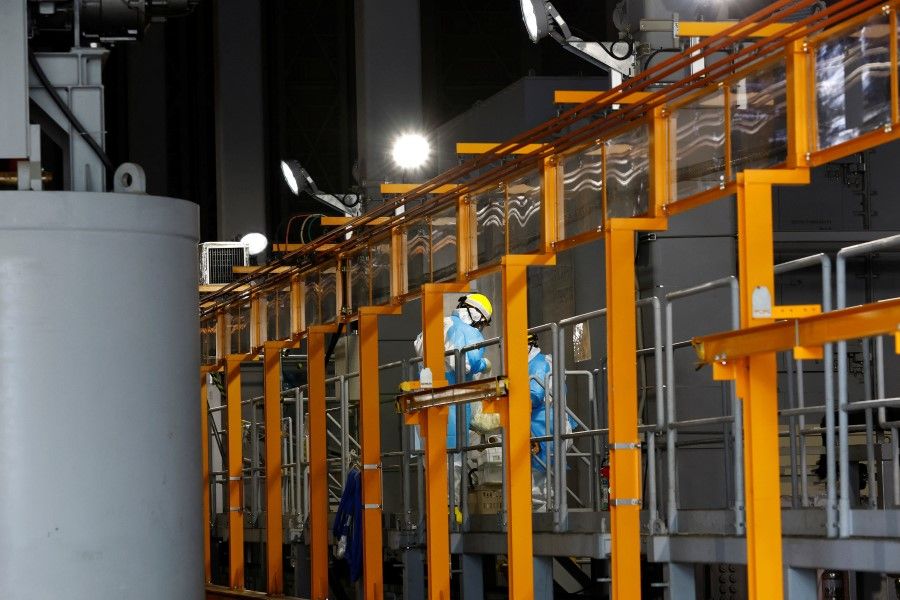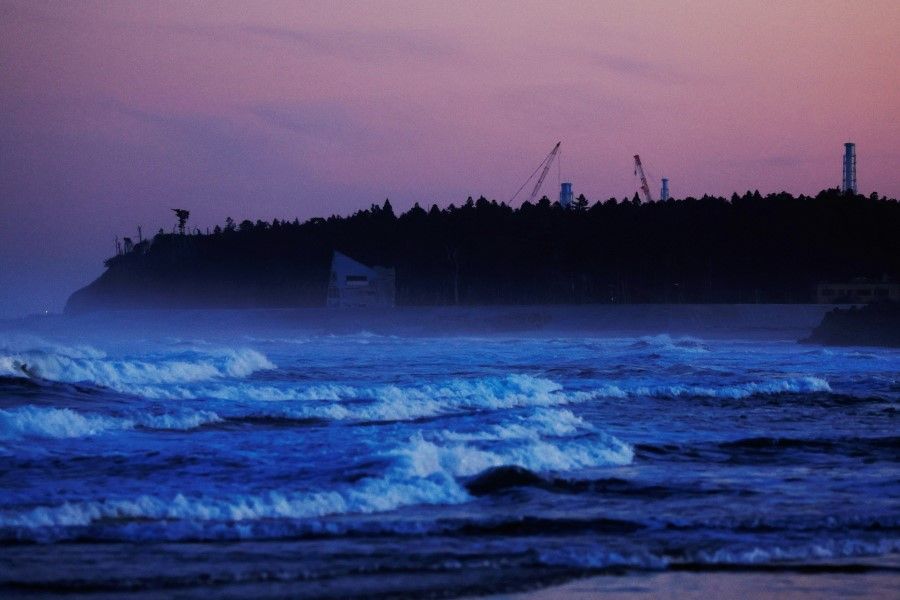Japanese academic: A hard look at the true impact of Fukushima Daiichi water release

Humans have long coexisted with radioactive materials. Although we cannot see it, a large amount of radiation is continually flying around us. If we go to a science museum, there may be a device called a cloud chamber that allows us to "see" this invisible radiation. The trajectory of radiation that happens to jump into the cloud chamber appears white like a contrail. Whether you think it's a lot or a little depends on the viewer's perspective.
In addition to radiation originating in space, there are other forms of radiation generated from the radioactive materials all around us. Radioactive materials are unstable substances that emit radiation and change into other substances, and are contained in various things such as soil, wood, minerals and living things. The amount of radiation generated is expressed in units called becquerels (Bq). One Bq is one nucleus decays per second. The unit is named after Henri Becquerel, who discovered the radioactivity of uranium.
Radioactivity all around us
One litre of seawater contains about 0.08 Bq of uranium. If you collect one ton of seawater, it will contain dissolved uranium that emits 80 Bq of radiation. Seawater contains various substances other than uranium. For example, there are 12 Bq of Potassium-40 (40K), an isotope of potassium, an essential element for life, dissolved in 1 litre of seawater. Such radioactive materials are dissolved in the seawater everywhere.

Radioactive substances are also dissolved in rain. There is a radioactive substance called tritium. Tritium is a hydrogen atom with two neutrons attached, also called hydrogen-3. It emits weak beta rays, a type of radiation, with a half-life of about 12 years. This tritium is constantly produced in the atmosphere by cosmic rays and falls as rain. One litre of rain contains about one Bq of tritium.
There is an excellent paper on environmental tritium in the Asian region published in Nuclear Science Techniques 33 (Article number 86) in 2022 by a group at Fudan University led by Professor Wei-Hai Zhuo, a prominent Chinese researcher ("Levels and Behaviour of Environmental Tritium in East Asia").

According to the paper, the amount of tritium in seawater and rain varies slightly by region, with higher concentrations at higher latitudes. Also, until around 1990, the amount of tritium contained in rain in China was an order of magnitude higher than in Japan and South Korea. This is partly due to the fact that many nuclear tests were conducted in China in the past.
The concentration of tritium in seawater is 0.1 to one Bq per litre even at the surface, depending on the depth. In any case, the amount is sufficiently small and has no effect on humans or the environment.
However, tritium is a relative of hydrogen, and its properties are so similar that it cannot be easily removed.
ALPS-treated water from Fukushima Daiichi released after checks
Fukushima Daiichi Nuclear Power Plant is scheduled to release a large amount of Advanced Liquid Processing System (ALPS)-treated water that has accumulated on the premises. ALPS-treated water is water that has been treated to remove most of the radioactive material from the contaminated water produced by the nuclear accident. However, tritium is a relative of hydrogen, and its properties are so similar that it cannot be easily removed. Radioactive substances other than tritium can be removed chemically, so the water contains only tritium in relatively large amounts.
For this reason, it is mixed with a large amount of seawater to dilute the concentration of tritium to 1,500Bq/L or less, and is released approximately 1 km offshore. Seawater originally contains 0.1 to 1 Bq/L of tritium. By immediately mixing with this large amount of seawater, the concentration will be diluted to about 0.1 to 1 Bq/L in no time. Furthermore, in order to confirm this dilution, the seawater will be monitored near the outlet to confirm that it is properly diluted. If by any chance it is not diluted, the release will be stopped.
In order to reduce the concentration of tritium, the plan is to dilute it more than 100 times before releasing it, so the concentration of radioactive substances other than tritium will also be diluted.

Radioactive substances other than tritium will also be thoroughly checked. Before release, the treated water is carefully inspected for about two months to ensure that the amount of radioactive materials other than tritium is well below internationally recognised standards. In order to reduce the concentration of tritium, the plan is to dilute it more than 100 times before releasing it, so the concentration of radioactive substances other than tritium will also be diluted.
Release of tritium has no impact on environment
If there is an influence from these substances in the seawater, it is because the influence of uranium and potassium-40 originally contained in the seawater was greater, and nothing more.
In other words, ALPS-treated water is released into seawater after sufficient checks and safety checks. The sea originally contains a large amount of uranium, potassium-40, tritium, etc. ALPS-treated water quickly becomes diluted and indistinguishable from the original seawater. It will be confirmed by monitoring whether it is diluted or not, so everyone will know that there is no problem at all.
The amount of tritium released at these plants is in fact much higher than the amount of tritium scheduled for release at the Fukushima Daiichi Nuclear Power Plant.

Incidentally, in nuclear power plants around the world, tritium is produced during reactor operation. This tritium is released into the seawater and into the atmosphere. The amount of tritium released at these plants is in fact much higher than the amount of tritium scheduled for release at the Fukushima Daiichi Nuclear Power Plant. However, the tritium quickly dilutes both in seawater and in the atmosphere, so there is no problem at all. Until now and in the future, the release of tritium will continue without any problems.
As the paper by Professor Zhuo and his group reveals, tritium is naturally present in the environment. The release of ALPS-treated water is negligible compared to the originally present tritium. In other words, the release will have no impact on the environment or on people.
It is worth remembering once again that humans have coexisted with radiation for a very long time.
